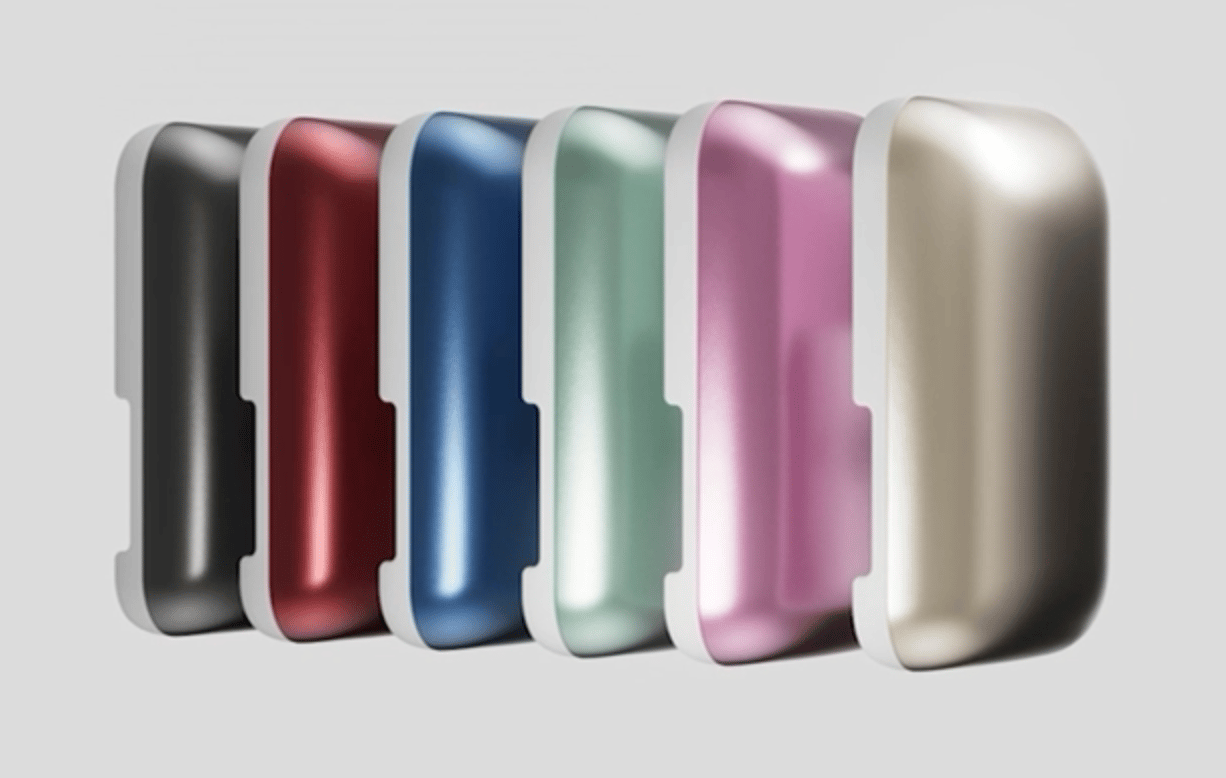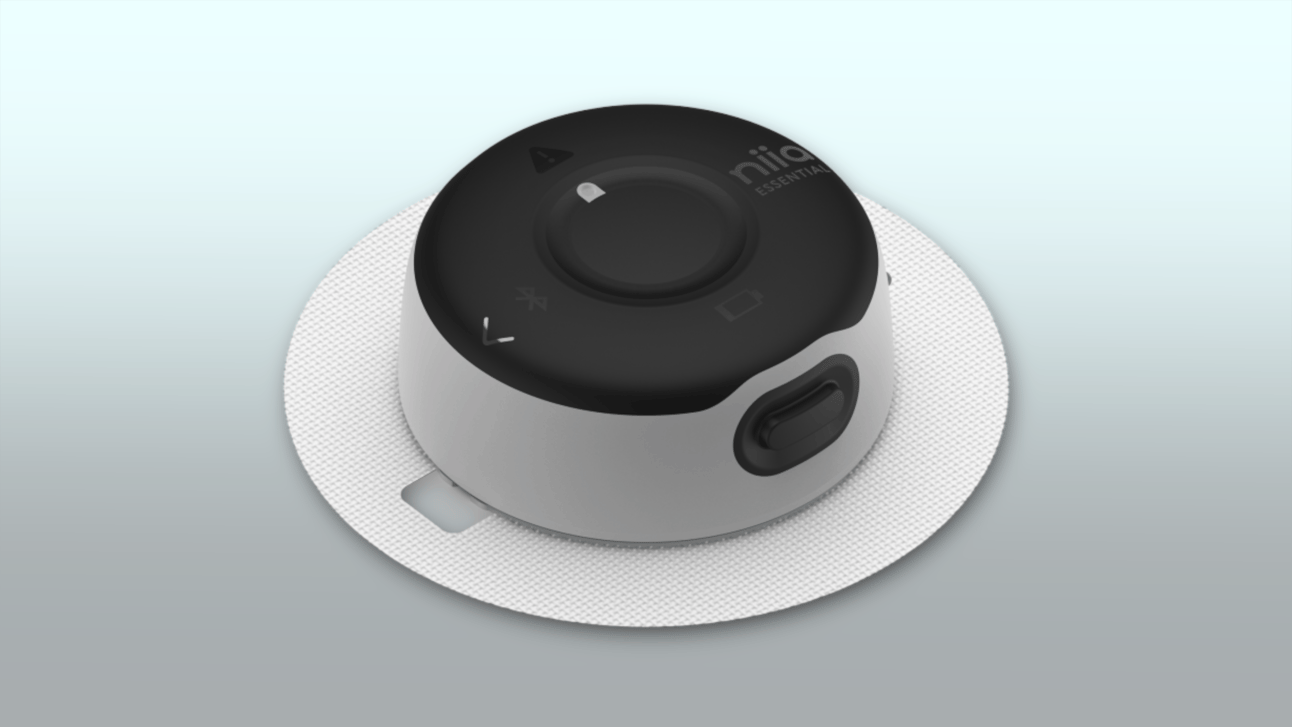Insulin pump tech is moving fast, and the next wave of innovation is more exciting than ever! From wearable pods with no screens to pumps that combine with CGMs, companies are focused on making diabetes management easier, more discreet, and with less moving parts. Whether you’re looking for fewer tubes, longer wear-time, or just something that feels simpler to use, here are six upcoming systems that are worth getting excited over.
A Tubeless Tandem Mobi

Tandem Diabetes is working on a tubeless version of its ultra-compact Mobi pump. The current Mobi is one of the smallest tubed pumps around, but the next iteration is expected to snap onto a body-worn patch with no tubes at all. The patch would include an infusion site and likely use a single-step applicator to simplify setup. The infusion site will last up to 7 days with its incorporation of the SteadiSet extended infusion set.
The tubeless form factor will be compatible will all current Mobi pumps, with the addition of an updated cartridge. It will automate insulin using Tandem’s Control-IQ+ algorithm and app, and will include wireless charging, an IPX 28 water resistent rating, and app-only controls. It’s an interesting bridge between what people love about Tandem pumps and the freedom of tubeless systems. We dive deep into all the details on tubeless Mobi in this recent video.
Tandem’s Sigi Patch Pump

Sigi is Tandem’s second big bet on tubeless tech. Originally developed by AMF Medical and acquired by Tandem in 2023, the Sigi pump was designed as a tubeless-first pump. It sports a reusable pump that is rechargeable, and designed to work with swappable insulin cartridges. Sigi gets clipped into a disposable pad that sticks to your body. We expect this pad + infusion set will incorporate the same 7-day wear-time as the tubeless Mobi.
Sigi already has FDA Breakthrough Device status and is waterproof. A standout feature is its cartridge system — you won’t have to draw insulin manually since the cartridges can be inserted straight into the pump. Some reports even suggest users will receive two Sigi pumps, so one can charge while the other is in use. It’s built with compatibility in mind for Tandem’s Control-IQ+ and could set a new bar for reusable patch pumps.
Beta Bionics’ Mint Pump

Beta Bionics is best known for its iLet pump, which simplifies diabetes management by using meal size entries such as small, medium, or large instead of requiring precise carbohydrate counting. Now, the company is bringing that philosophy to a tubeless device called Mint, short for “Mini Insulin Therapy.” The new pump was unveiled at ADA 2025 and is set to launch by the end of 2027.
The Mint system has two parts — a reusable “brain” and a disposable patch that includes the batteries that power the device. This means the pump won’t require charging. The goal is to make wearing a pump as simple as sticking it on and letting it go to work—Beta Bionics says a phone will not be required during site changes (after the initial setup). The current plan calls for a 3-day wear time, which some people may find short, especially as 7-day wear-times become more common. But Mint’s hands-off approach and intuitive design make it one to watch.
Medtronic Flex & Medtronic Fit

Medtronic, soon to be MiniMed, is working on two new systems that both reflect the move toward simpler and screenless designs. The upgraded 8-Series pump, codenamed Flex, is a traditional tubed device with no display — everything is controlled through a smartphone app. It includes a physical button which we presume is for boluses when a phone isn’t nearby. This pump will work with Medtronic’s 7-day Extended Infusion Set, which allows for longer wear.
Meanwhile, the tubeless Medtronic pump — referred to as Fit — takes a modular approach. It will use a reusable base and hold 300 units of insulin, which is 50% more than some other patch pumps today. That makes it especially useful for people who have higher insulin needs. The company recently polled users about potential pump colors and is clearly fine-tuning both form and function. We expect pivotal trials for the 8-Series in 2025 and we’ll have more updates on Fit as it progresses.
Kaliedo 2: A Pump That Can Track Movement

The Kaleido 2 is Kaleido’s bold step into next-gen pumping, bringing a sleeker design, upgraded hardware, and more vibrant customization than ever before. It’s lighter, smoother, and built for people who want a pump that feels less like medical equipment and more like an everyday accessory. Beyond the looks, Kaleido 2 adds smarter connectivity, improved battery performance, and seamless compatibility with Diabeloop’s hybrid closed-loop system—pushing it firmly into the future of automated insulin delivery. It also sports a gyroscope inside that could one day track a wearer’s movement and use that to inform an insulin delivery.
If you haven’t seen the original Kaleido, it’s already one of the most prettiest pumps available in select European markets, offering a patch-style design connected by a short piece of tubing. And the OG Kaleido is getting a major upgrade—soon it will integrate with the Dexcom G7 and add phone control, making it more flexible and appealing than ever. With Kaleido 2 on the horizon and the current pump gaining these big upgrades, Kaleido is quickly shaping up to be a brand that brings both personality and cutting-edge features to the insulin pump market.
Niia: The All-In-One Pump and CGM

The Niia system from Swiss company PharmaSens might be the first to fully combine a pump and CGM into a single patch. Controlled entirely through a smartphone app, Niia is screenless, sleek, and designed to streamline diabetes care by reducing the number of devices a person wears.
The company is developing multiple Niia models, including one that uses a CGM made by Sibionics, a partner that just received CE Mark approval in Europe. That sensor, the GS3, is only 2.9mm thick and weighs 1.5g, making it light enough to blend seamlessly into a wearable pump. This could mark a major turning point for automated diabetes management — fewer moving parts, fewer reminders, and potentially smarter control in one compact system. Learn more about Niia here.
Omnipod’s Upgraded Algorithm: Evolution

The next-gen Omnipod is expected to deliver better performance and smarter automation without changing the tubeless, screenless format users know and love. The new algorithm, internally called Evolution, has already shown early promise in clinical testing.
In trials, users with type 1 diabetes who did not deliver insulin before meals saw their time-in-range improve from 37% to 57%. Type 2 participants saw similar gains. While the system isn’t fully closed loop just yet, it’s getting closer, and this update is part of a broader push to reduce the workload of diabetes care. You can dive deeper in this article.
The future of insulin pumps is exciting and it’s our mission to keep you informed, so be sure to check back regularly and subscribe to our free newsletter to stay informed! And, to learn more about all these pumps—watch the video below:
Want more?
If you’re enjoying our content, consider joining Diabetech All Access—our premium membership with exclusive stories, Live Q&As, and industry analysis. Your support helps sustain our independent journalism and keeps this platform thriving.
Disclaimer: Diabetech content is not medical advice—it’s for educational purposes only. Always consult with a physician before making changes to your healthcare.


